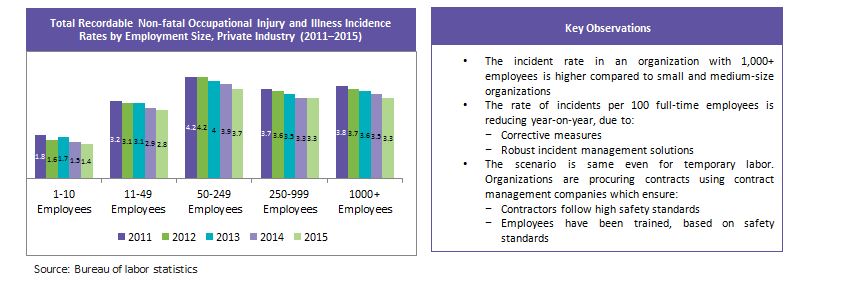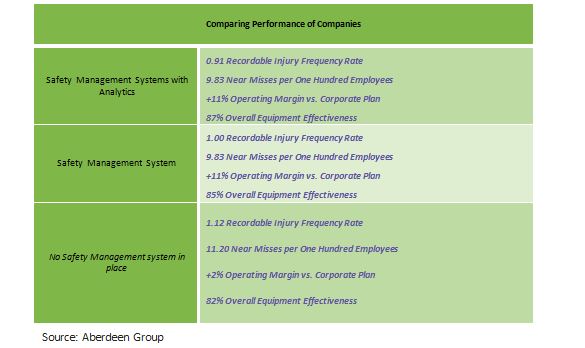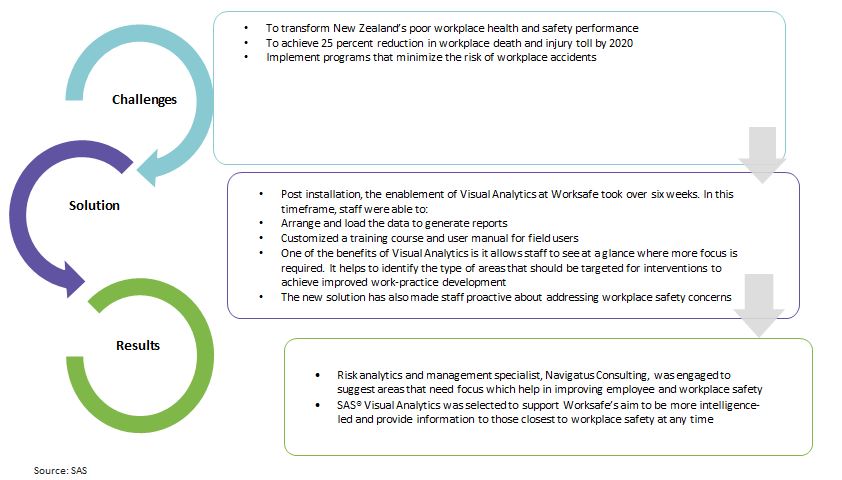
Enable labor safety using incident management tools with analytics

Abstract:
Under the federal law, every employee is entitled for a safe workplace. It is an organization’s responsibility to create a workplace which is free from health and safety hazards, and to reduce fines and fees from accidents and failed inspections in order to improve workplace morale.
The fatal injury rate is 3.5 for every 1000 employees. Organizations have seen a steady decrease in the rate of fatal incidents in the past 2 years, which is mainly because of the Occupational health and safety initiatives.
As technology continues to advance, it is becoming more sophisticated and more accessible. Organizations are now able to access applications to support their environment, health and safety (EHS) activities through a broad range of budget levels, configuration and implementation complexity.
The adoption of software in EHS is still varied. Many organizations use manual processes and widely available operating system applications to record their EHS activity-based data with obvious limitations. Others range from in-house built systems to highly complex enterprise options.
An incident management tool which can capture minute information at a real time is the need of the hour. However, many incident management tools are lagging in analytics which is predictive in nature.
Predictive analytics is an emerging area and its applications can be widely found in sectors such as banking and retail. However, it is not yet present in EHS systems. The challenge with EHS is such analytics are anchored to the quantity and quality of the database and how that is produced. In EHS, the data base can only be grown through a broad range of EHS activities (leading and lagging indicators) that are driven by people employed by or contracted to an organization.
Findings / Main Body
The combination of incident management and analytics which is predictive in nature can become a dynamic tool in identifying injuries and build programs and plans so that mishaps do not recur in future.
Incident management tools include basic analytical tools such as alerts, Query drill down, and Ad hoc reports. However, advanced analytical features such as optimization, Statistical analysis and Visual analytics are also important.
Progressive companies turn their raw data into actionable information and then optimize their preventive efforts to reduce injury rates. These leaders are driving competitive advantage for their companies by moving up the advanced analytics pyramid. To name a few, suppliers who are working towards implementing advanced analytics are Enablon, KMI (Velocity EHS) and Rivo software.
SAS and IBM Analytics have predictive tools which can be quickly scaled up to have a snapshot of trends.
Suppliers such as Enablon, KMI (Velocity EHS), Predictive Solutions, Rivo Software, Gensuite, Medgate, Intelex and metric stream have superior incident management tools with analytical capabilities.
Worksafe tackled New Zealand’s health and safety problems with an intelligence-led approach.
Case Study: SAS Visual Analytics – Worksafe New Zealand
Conclusion
Buyers
- A small percentage of organizations are going to be in a position to use predictive EHS tools. However, given the likely scale and complexity of this grouping, they will be powerful in their overall EHS strategy. Importantly, the activities that are required to produce a meaningful dataset that could be used for predictions are the foundation of world-class performance
- A leading indicator based culture that is driving engagement, communication and leadership will be the dominant factor in reducing incidents and workplace harm for most organizations
Suppliers and New Entrants
- Companies which provide incident management tools for EH&S lag in analytics which is predictive in nature
- Companies such as Enablon, KMI and Rivo software are taking initiatives towards analytics in EH&S and its importance
- The vendors for incident management tools are niche and it is a consolidated market. The opportunity to build incident management tools with advanced analytics capabilities will be the key feature for new entrants
- As per Beroe analysis, analytics is the key feature which is still missing in incident management software
Related Insights:
View All
Get more stories like this
Subscirbe for more news,updates and insights from Beroe










